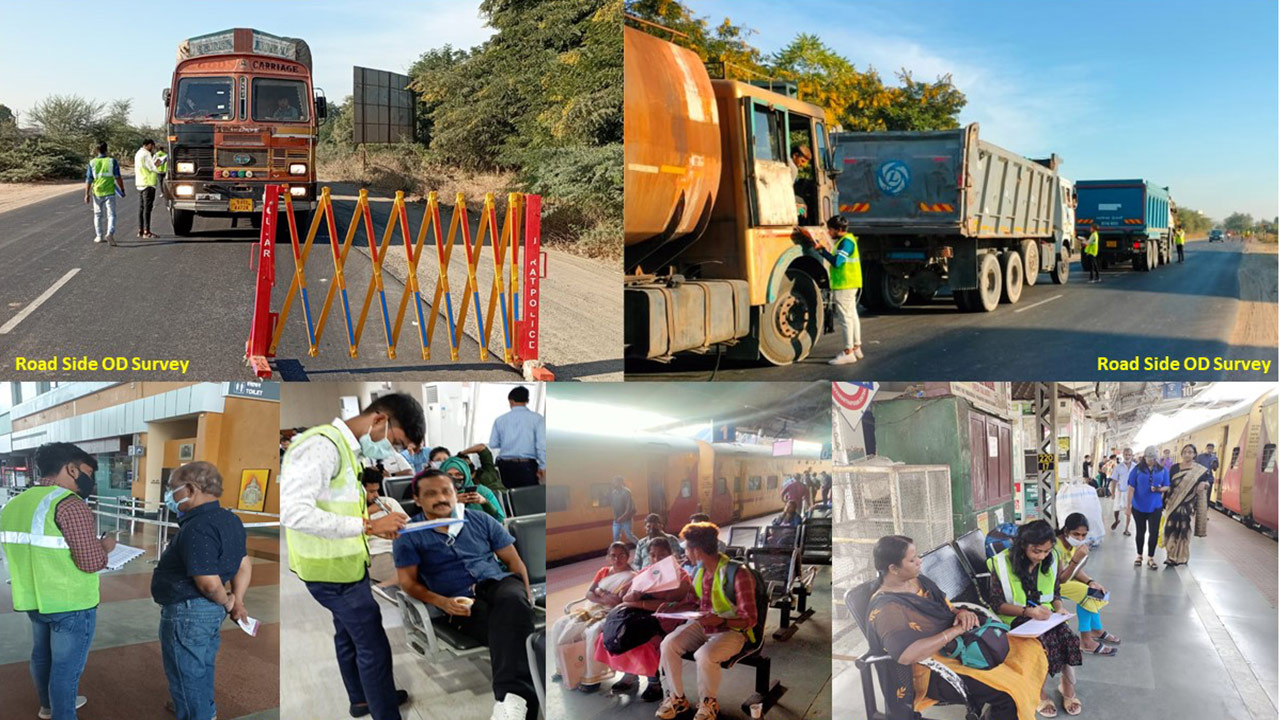


Origin-Destination (O-D) surveys and commodities surveys are significant instruments in transportation planning and logistics management. They concentrate on comprehending the flow of commodities in particular areas, freight traffic, and travel patterns.
+Get Quote1. Survey of Origin-Destination (O-D)
The purpose of an O-D survey is to gather information about the origin and destination of travels. Understanding travel trends, the effectiveness of transportation networks, and the movement of people and cars within and between areas all depend on these studies. Better road networks, public transportation systems, and urban infrastructure can be designed with the aid of O-D surveys.
O-D Survey Types:
Roadside Interview Surveys: Motorists are halted at strategic points and questioned about their journey, including where they are going, why they are there, and what kind of transportation they are using.
Mail-back or online surveys: Respondents can choose to electronically or by mail return a questionnaire regarding their travel patterns.
License Plate Surveys: Information gathered from cameras or observers at various sites is utilized to track the origin and destination of a vehicle.
GPS tracking or mobile phone data: Both can be used to follow people's and cars' movements between different sites, giving large-scale and real-time O-D data.
Important Information Gathered:
Origin and destination of the trip
The reason for the trip (business, play, shopping, etc.)
Transportation mode (automobile, bus, rail, etc.)
Travel time (to determine peak hours)
Travel time and distance
Applications:
Infrastructure planning for transportation (new roads, bridges, highways)
Planning for public transportation services
Congestion management and traffic flow analysis
Supporting initiatives for reducing travel time and enhancing network efficiency
2. Surveys of Commodities
Commodity surveys are mostly employed in freight and logistics planning, with an emphasis on the movement of commodities rather than passengers. They aid in understanding the different kinds of items being moved, as well as the routes and modes of transportation that are employed. This is essential for the development of infrastructure and effective supply chain management, particularly for industrial locations.
Commodity Survey Types:
Checkpoint Truck Surveys: Trucks are stopped at particular sites, and drivers are queried about the type of goods, weight, origin, and destination.
Warehouse or Distribution Center Surveys: Data is collected from warehouses, manufacturers, and distribution centers describing the type of items they handle, volumes, and shipping destinations.
train, Ship, and Air Cargo Surveys: These surveys track commodities as they enter or exit the transportation network and keep an eye on their movement across different modes of transportation (train, sea, and air).
Electronic tracking: GPS trackers, barcodes, and RFID tags can all be used to keep tabs on the flow of items through supply chains.
Important Information Gathered:
Type of commodity (raw materials, finished goods, perishables, etc.)
Volume and weight of the goods
Where the commodities come from and go to
Transportation mode (air, rail, truck, ship)
Delivery and shipping times
Managing and storing requirements
Uses:
Organizing logistical centers and freight corridors
lowering obstructions in the flow of freight
maximizing the paths and modes of transportation in the supply chain
supporting laws that promote economical, environmentally friendly freight transportation (e.g., lowering emissions, balancing rail vs. road utilization)
determining the locations of warehouses and distribution centers.
For supply chain management, infrastructure development, and transportation planning, both O-D and commodity surveys offer vital data. Would you like more information about the methods used to conduct these surveys or the data analysis process?